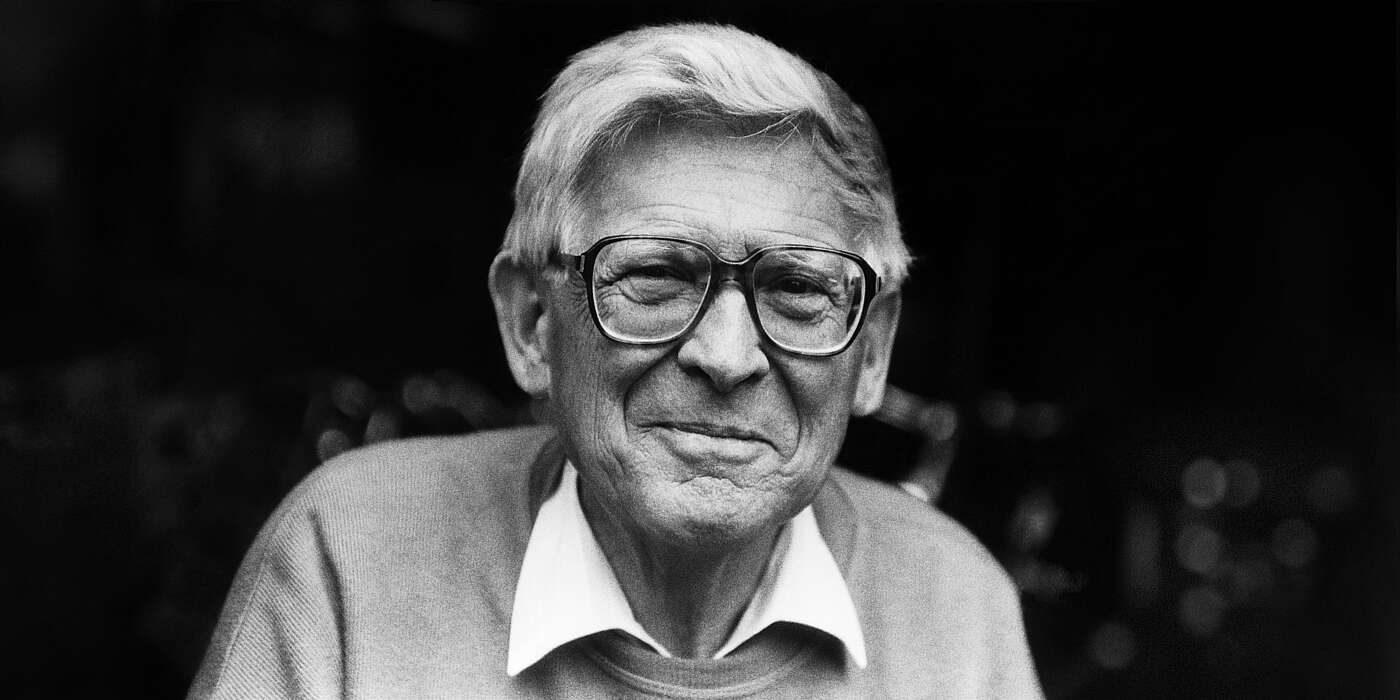May 15th, 2020, marks the 100th anniversary of the birth of Prof. Eduard Kellenberger. The physicist has not only gone down in the history and textbooks as a pioneer of electron microscopy but also as an early representative and advocate of the emerging scientific discipline “molecular biology”. He also played his part on the history of the Biozentrum at an early stage: He was one of the five most important promoters from the scientific community, the University of Basel and private industry, championing the establishment of the interdisciplinary molecular biology research institute in Basel.
The Biozentrum – an interdisciplinary research institute
In 1971, Eduard Kellenberger took over the leadership of the newly founded Biozentrum and brought outstanding research personalities from his team in Geneva to Basel, including the future Nobel Prize laureates Prof. Werner Arber and Prof. Jacques Dubochet. In the coming years, Kellenberger formed the Biozentrum to become an institute with international renown and the “place-to-be” for students and researchers worldwide.
Already in developing the concept for the Biozentrum, it was a matter of great importance to Kellenberger to bring together diverse disciplines such as genetics, biochemistry and biophysics under one roof. During his scientific career, he had himself experienced how decisive interdisciplinary thinking was for addressing questions and solving problems. And this applies today more than ever. In times of global challenges, solutions are not found in a simple recipe from an individual discipline, it is the interaction of different expertise that is indispensable.
Gold standard for electron microscopy
Eduard Kellenberger was born on May 15th, 1920, in Bern and studied physics at the ETH Zurich under Paul Scherrer, Switzerland’s most prominent atomic physicist. In 1945, Kellenberger joined the laboratory of the physics professor Jean Weigle at the University of Geneva to study the genetics of bacterial viruses, so-called bacteriophages. This led to his involvement in the development of the first Swiss made electron microscope. In order to demonstrate the usefulness of the instrument for biomedical research, he attempted to produce images of biological specimens. However, these attempts initially failed due to the crude preparation methods which destroyed the samples.
In 1958, when Kellenberger was already a research group leader himself, he and the chemist Antoinette Ryser succeeded to develop a sample preparation method preserving the microscopic structures. With this “RK-method”, he was successful in producing precise electron micrographs, some showing, for the first time, bacteriophage replication within a bacterium. This technique went on to become the gold standard and its publication a thousandfold cited classic. “Kellenberger was a true electron microscope virtuoso”, was how Bruno Strasser, Professor of Science history at the University of Geneva later described him.
Nobel Prize in Medicine or Physiology and in Chemistry
At the end of the 1950s, Kellenberger’s laboratory in Geneva was not only well known for its important scientific work on bacteriophages, but also for his “American” leadership style, which left his team much freedom and fostered creativity and independent thinking. For Werner Arber, who did his PhD and later worked as a postdoc in Kellenberger’s lab, this freedom meant that he could intensively devote himself to his project, which eventually led to the discovery of DNA-cutting enzymes, the restriction enzymes. This was a milestone that revolutionized molecular biology and genetics and for which Werner Arber was awarded the 1978 Nobel Prize in Medicine or Physiology. Also, Jacques Dubochet, laureate of the 2017 Nobel Prize in Chemistry, graduated with his doctorate under Kellenberger and remained closely associated with him both scientifically and personally throughout his life.
Molecular biology – a separate scientific discipline
A major achievement of Kellenberger was to establish and advance molecular biology as an independent scientific discipline. in 1963, he founded Switzerland’s first Institute of Molecular Biology at the University of Geneva bringing his vision of interdisciplinary research to life. That same year, Kellenberger was involved in the founding of the now prestigious European Molecular Biology Organization, EMBO, and became its first council member.
Eduard Kellenberger remained a research group leader at the Biozentrum until 1990. After becoming an emeritus professor, he continued his research at the University of Lausanne. For his pioneering research he was awarded the Swiss Science Prize Marcel Benoist and was recognized with several honorary doctorates. His last publication appeared after his death on December 13th, 2004. His lifelong driving desire and motivation was to create knowledge to serve the common good.
Based on an article published in the scientific magazine of the University of Geneva.
Contact: Communications, Katrin Bühler



